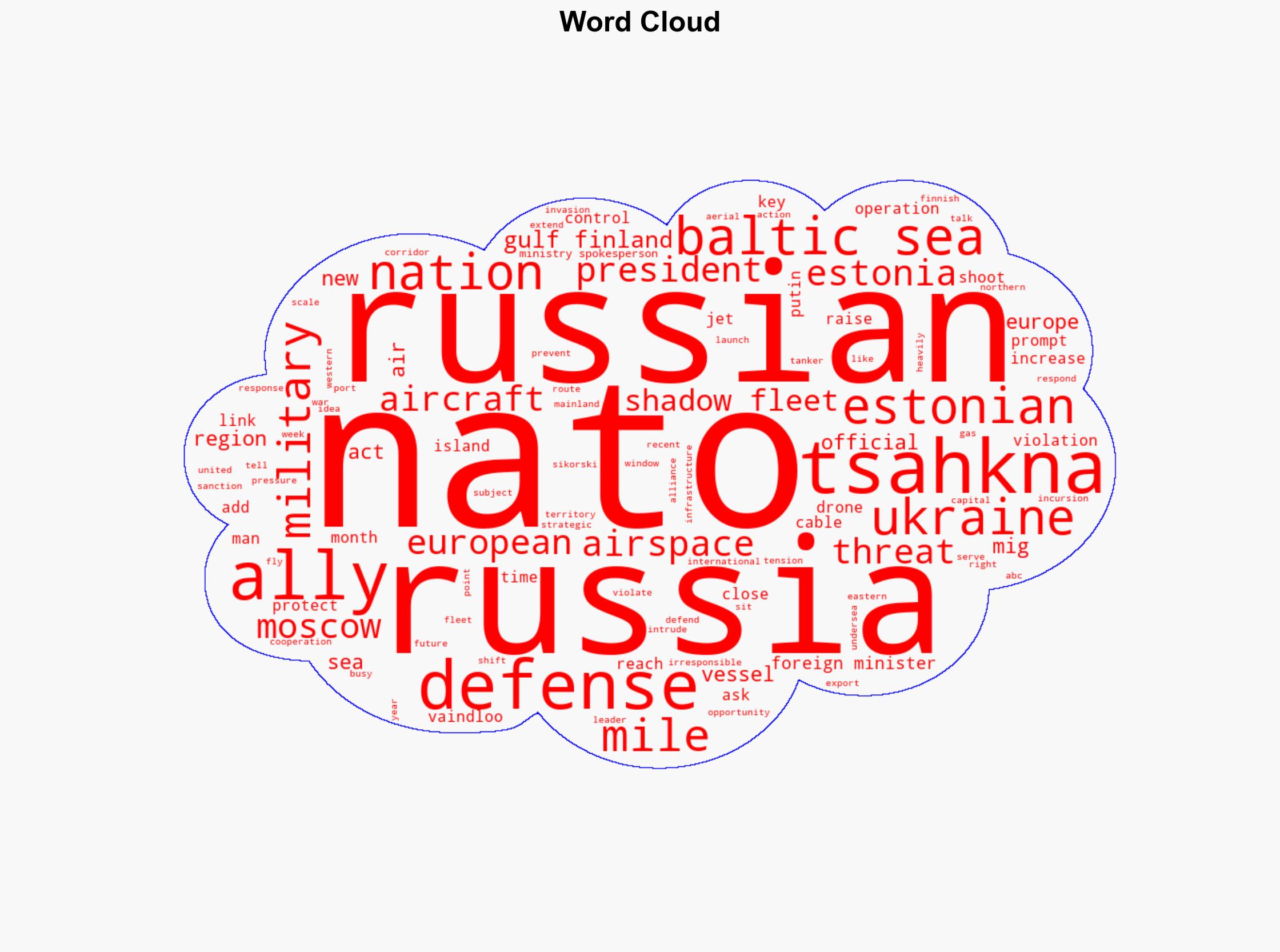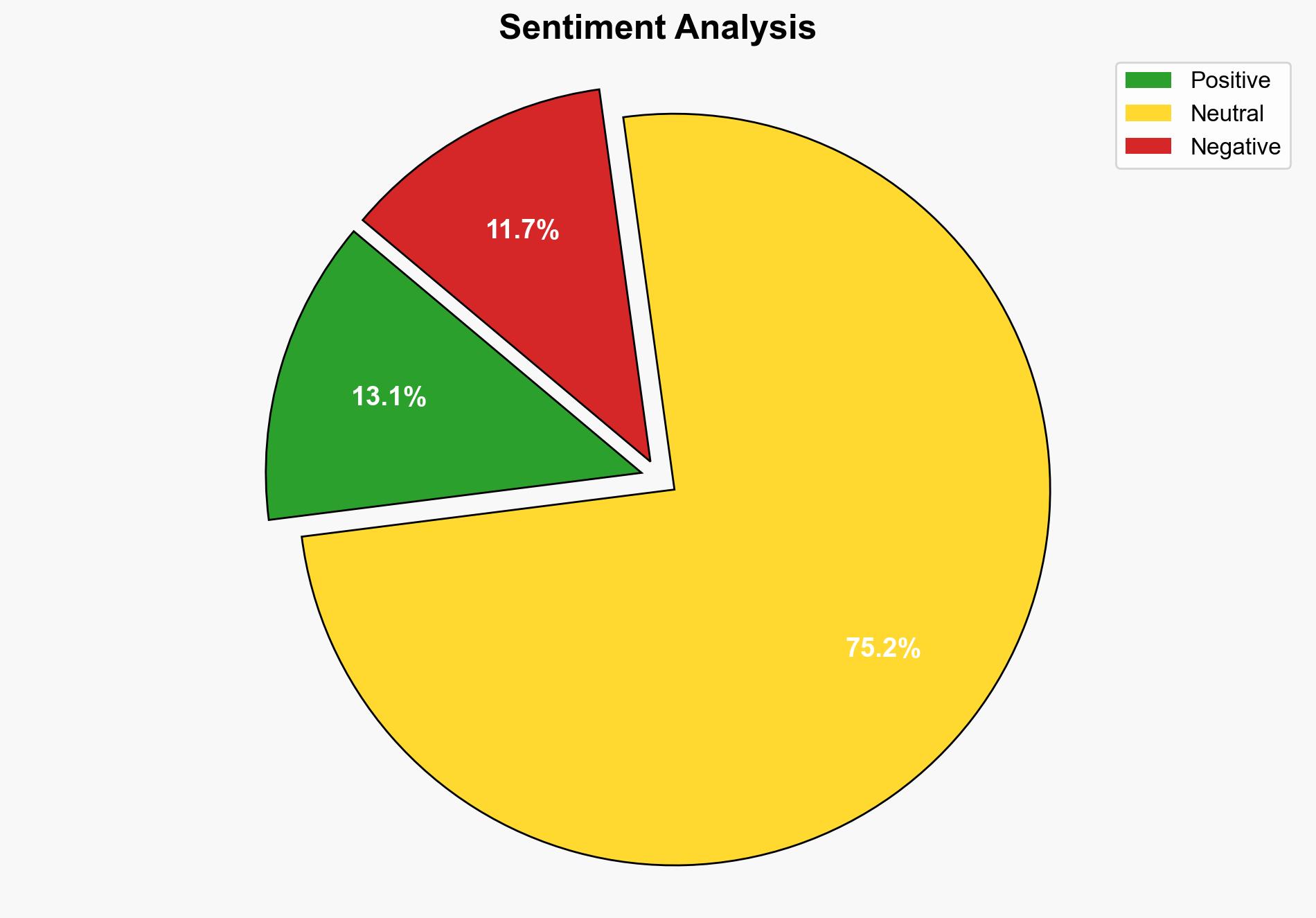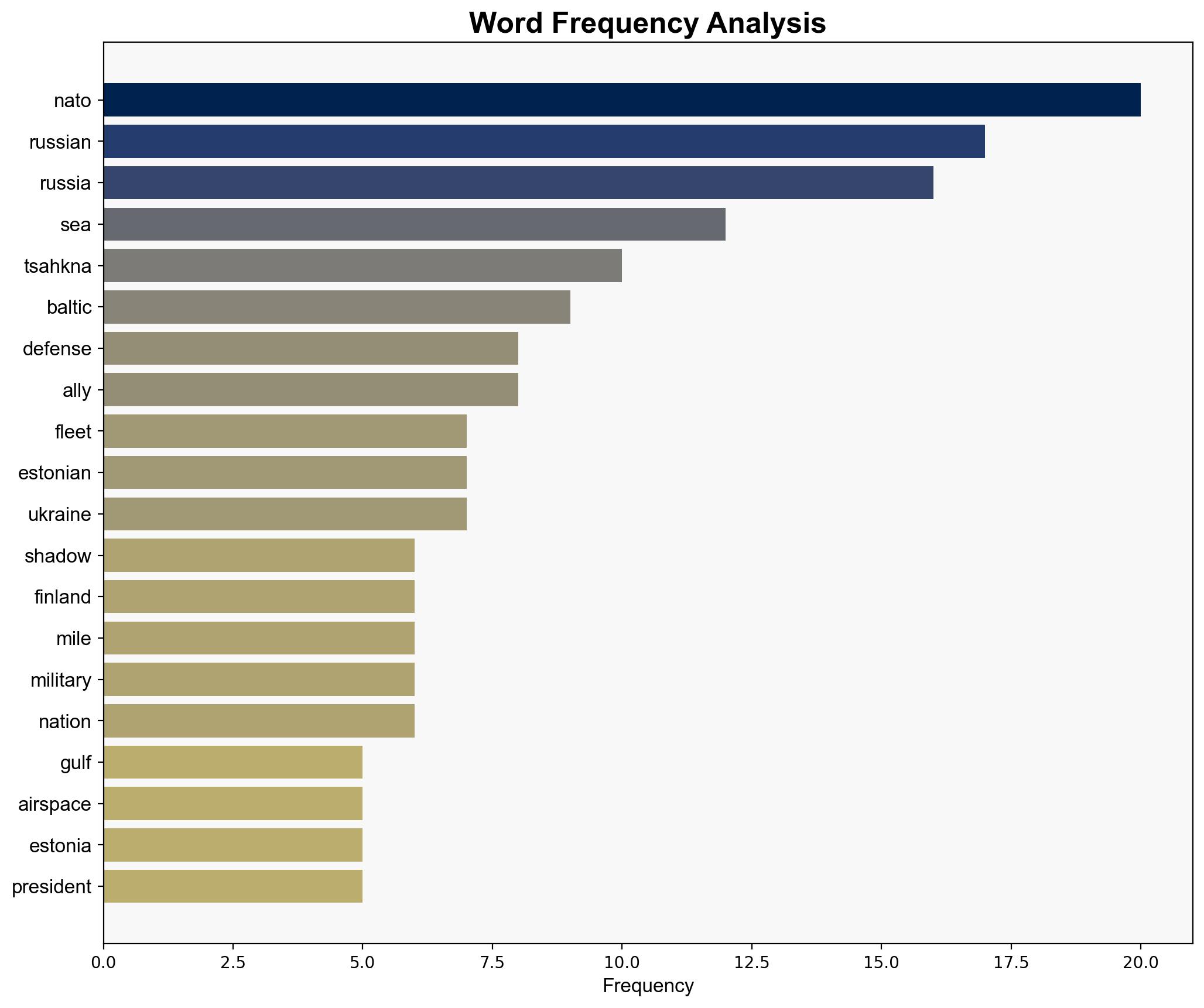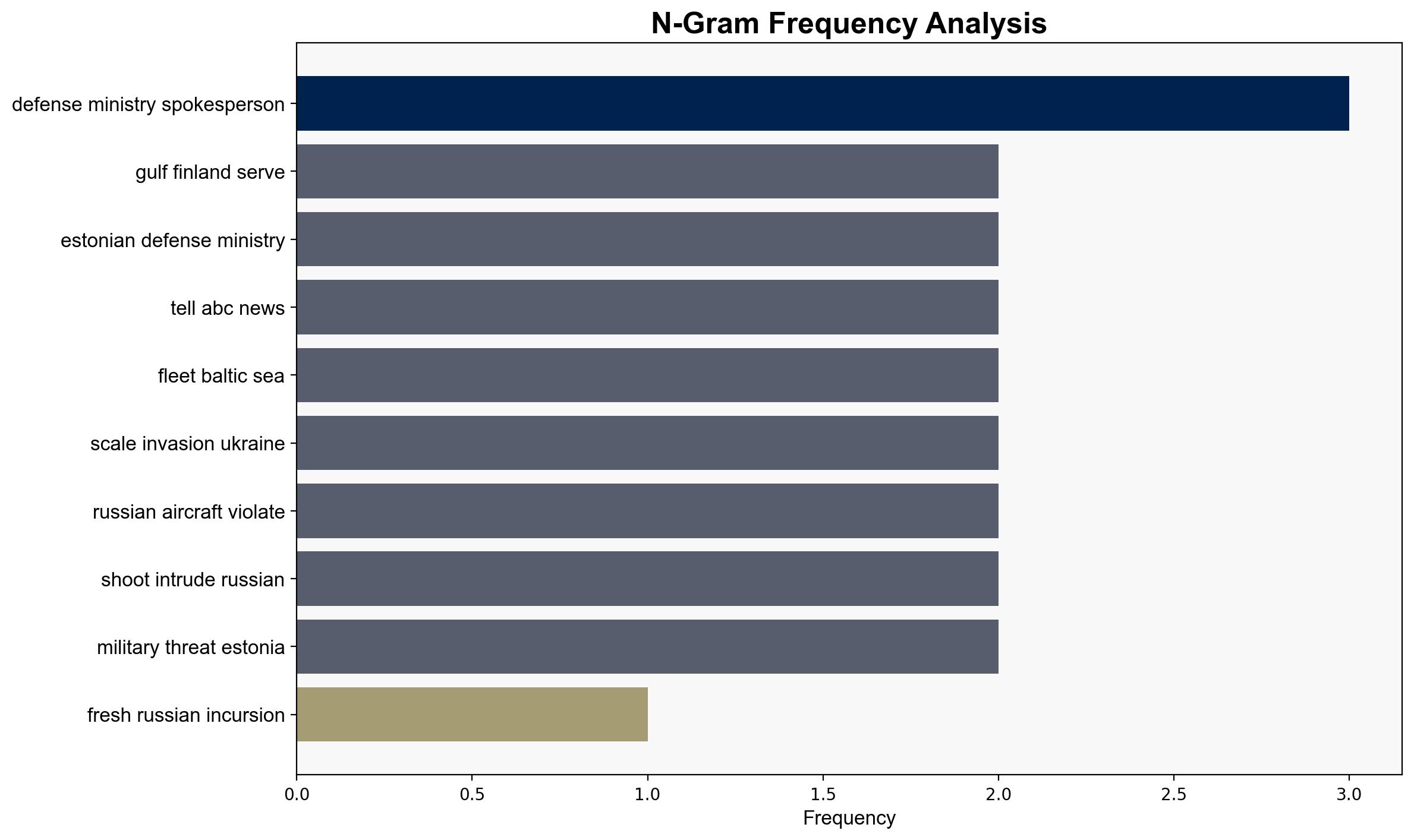Fresh Russian incursions raise temperature for NATO in the Baltic Sea – ABC News
Published on: 2025-10-10
Intelligence Report: Fresh Russian incursions raise temperature for NATO in the Baltic Sea – ABC News
1. BLUF (Bottom Line Up Front)
The most supported hypothesis is that Russia’s incursions are strategic maneuvers to test NATO’s response capabilities and divert attention from Ukraine. Confidence level: Moderate. Recommended action: Enhance NATO’s surveillance and defense posture in the Baltic region while maintaining focus on supporting Ukraine.
2. Competing Hypotheses
1. **Hypothesis A**: Russia’s incursions are deliberate provocations aimed at testing NATO’s response and creating a diversion from its activities in Ukraine.
– **Supporting Evidence**: The unprecedented nature of the incursions, involvement of multiple NATO air forces, and strategic location near key Russian ports suggest a calculated move.
2. **Hypothesis B**: The incursions are routine military exercises that have been misinterpreted as aggressive actions due to heightened tensions.
– **Supporting Evidence**: Historical patterns of airspace violations and the proximity of Russian military bases may indicate routine operations rather than intentional provocations.
Structured Analysis: Using ACH 2.0, Hypothesis A is better supported due to the strategic timing and location of the incursions, as well as the broader geopolitical context involving Ukraine.
3. Key Assumptions and Red Flags
– **Assumptions**: It is assumed that Russia’s actions are intentional and not accidental. There is also an assumption that NATO’s response will be measured and not escalate tensions further.
– **Red Flags**: The lack of direct communication from Russia regarding the intent of these incursions. Potential cognitive bias in interpreting routine exercises as aggressive actions.
– **Inconsistent Data**: Limited information on Russia’s internal military communications and strategic objectives.
4. Implications and Strategic Risks
– **Escalation Risk**: Increased military presence and potential for miscalculation could lead to unintended conflict.
– **Geopolitical Impact**: Strains on NATO unity if member states perceive different levels of threat.
– **Economic Consequences**: Disruption of energy exports through the Baltic Sea corridor could impact European economies.
– **Psychological Impact**: Heightened public fear and pressure on governments to respond decisively.
5. Recommendations and Outlook
- Enhance intelligence-sharing and coordination among NATO allies to ensure a unified response.
- Implement confidence-building measures with Russia to reduce the risk of miscalculation.
- Scenario Projections:
- **Best Case**: Russia de-escalates, and diplomatic channels reduce tensions.
- **Worst Case**: Misinterpretation leads to a military confrontation.
- **Most Likely**: Continued low-level provocations with sustained NATO vigilance.
6. Key Individuals and Entities
– Vladimir Putin
– Volodymyr Zelenskyy
– Sergei Lavrov
– Margus Tsahkna
7. Thematic Tags
national security threats, regional focus, military strategy, geopolitical tensions





